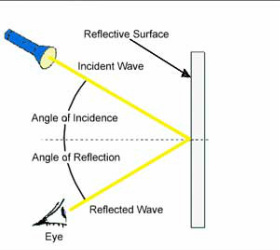

Well, the 2nd wave, since it's traveling one wavelength further, is going to hit at this point in it'sĬycle so it would be here. The 1st wave hit that point at this point in it's cycle. It doesn't have to be but let's just say it was there. So if I draw my wave, let's say the wave from the 1st hole happened to be at this particular point on it's cycle.

Wave, they're going to match up perfectly there One extra wavelength, it's going to be constructive because if I draw my One wavelength further than the wave from the 1st hole and again what that means is if I were to carefully draw a line from here at a right angle right there, that means that this wave, from the 2nd hole, this is the extra part so that would be one extra wavelength and because this 2nd wave is traveling In other words, this would be the constructive point where the 2nd wave from the 2nd hole travels Let's say this is a bright spot but say it's the bright spot that corresponds to, delta Two waves coming in from two holes get over to here. Let's say we just had these two holes to start off with right? Two holes, double slit, disregard all this stuff for a minute. Let's say we look at a point over here where it is constructive. Let's imagine this 1st wave from this 1st hole, it's going to travel a certain distance to the wall. How can you see this pattern over here like this? So, the 1st wave from this 1st hole. There and then darkness and then another dot and then darkness and another dot and you'll see this continue out much further You'll get, you really will just get, a dot right So if these are all DĪpart, what happens is on the wall over here, instead of getting this smudgy pattern, I'm going to make 1,000's of these holes extremely close togetherĪs long as they're all at distance D apart, something magical happens. So you come over to here and if these are spaced to distanceĭ, I'm just going to make another hole at distance D and then I'm going to make another hole at distance D and then I'm going to make another hole at distance D.
DIFFRACTION DEFINITION SCIENCE HOW TO
So, my question is, is there a better way? Is there a way to make these spots more defined and so youĬan see more of them so they're brighter and the answer is definitively yes and we figured out how to do it and the way you do it, is you just make more holes. Sometimes you're lucky to even see the 5th or 6th bright spot down the line. Probably want to measure distance between two of these bright spots because that's what I can see but because they're smudgy, it's like is that the center? Is this the center? Sometimes the lights not so strong and it's hard to tell and what's worse is these kind of die off and so there's another problem. Side of the triangle and then I would also You'd have these bright spots but they'd kind of blend in to dark spots which blend into bright spots which is why when we draw a graphical representation of this, it kind of looks like this, where these spots are blending into each other which is cool but it also kind of sucks because if you were to go actually try to do this experiment, you'd want to measure some angles and that means that you'd have to measure some distances. Green laser through here what you'd see on the screen would be something like this. Double slits are cool because they show definitively that light can have wave like interference patterns and if you shine a The part of the wave that would reach the point would be near zero if represented in the wavy way, and the latter would have reached the point having being shifted more than π times. For example the wave that was 1.3 shifted from the first ( and still only 1.1 shifted from the previous) and the one that was 1.8 shifted would destroy each other as the former would be shifted to near a the zero point, i.e.

What I mean is each light wave emerging from the slit was 1.1 wavelengths shifted compared to the previous ( just as in the constructive point you had each light wave being 1 wavelength shifted compared to the other) * and therefore, over a large number of light waves from the many slits, we had each wave cancelling out with the other*. Considering it s slightly more, as in the example David gave in the video, just as in double slit the light coming from one slit was slightly less constructive ( in the example we just set it to be skewed by 1.1 wavelengths), the light in this case coming from every slit was a little lesser constructive compared to the previous. Here's how: We know from double slit that as you move away from the constructive point the path length difference or ∆x is not exactly 1λ but is slightly more or slightly less. Oh so you're getting stuck on how exactly as we move away from the constructive point do waves get destructive.


 0 kommentar(er)
0 kommentar(er)
